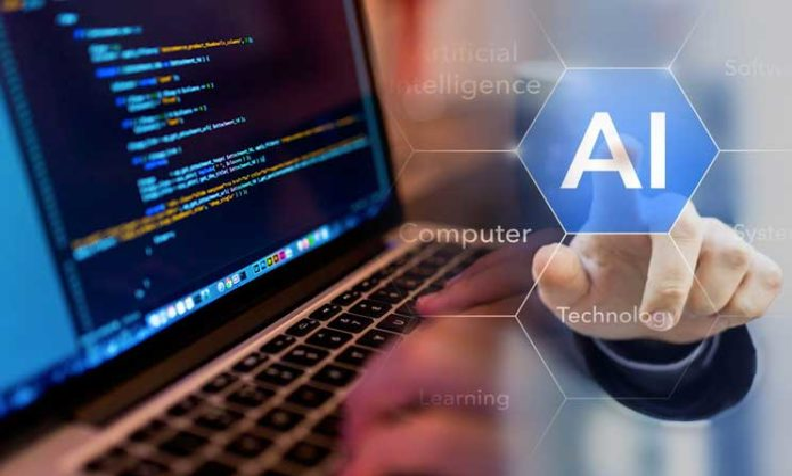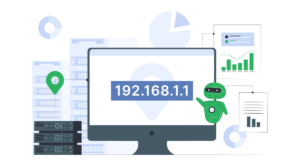Do you believe in the potential of artificial intelligence? Polarized perceptions on the subject prevent us from seeing what is already possible matter. In business, artificial intelligence brings a real competitive advantage: the automation of decisions thanks to the increased employee, the predictive maintenance and the interactions with the information system of the company. The key to success ultimately lies in the combination of artificial intelligence forces with those of employees.
Today, artificial intelligence is very often described in a fatalistic or evangelistic way: the robots will take our jobs or on the contrary, it will solve all our problems and is the ultimate solution to save our planet. It is ironic that such complex technology causes such simple and binary feelings. AI with cloud services proving the best model in technology. This poses, in fact, a real problem. For all the engineers and technicians who actually work with this technology, the truth is far less extreme and, at least in the short term, represents significant benefits in terms of productivity improvement. For what business activities is this actually the case? Which are the trades in company which one can qualify as pioneers in the exploitation of the artificial intelligence?
1) INCREASED INTELLIGENCE AND AUTOMATION OF DECISIONS
One of the reasons why some people imagine that artificial intelligence will deprive employees of their work is that they confuse artificial intelligence with automation. According to Gartner*: “2020 will be a pivotal year in the dynamics of jobs related to artificial intelligence because it will become a major focus for employees […] Artificial intelligence will create 2.3 million jobs by 2020 while eliminating 1.8 million. Svetlana Sicular, an analyst at Gartner, adds: “Unfortunately, the most negative warnings about job destruction related to artificial intelligence that we can read and hear in the media are confusing artificial intelligence and automation; which eclipses the greatest benefit of artificial intelligence, namely artificial augmentation, that is to say the combination of human and artificial intelligence. “
A great example of this is perhaps the optimization of the decision. In an expanding global market, industries are constantly struggling with increasing complexity. Globalization, innovation and competition are developing at a high speed and companies must constantly produce or supply more with fewer and fewer resources and ever more agile. One of the consequences of this rapid globalization is that the demand for goods and services is changing instantaneously in all markets around the world. Imagine a company selling products in more than 50 markets. A sudden increase in the prices of its raw materials in a region or new commercial rates will make it necessary to adjust the level of demand and possibly its prices and this in a very short time. In this example, artificial intelligence can help visualize a large number of factors simultaneously to produce a demand and price adjustment and planning plan. Past data can be used to build scenarios and make decisions faster and smarter. With very large volumes of data from different markets, it can be difficult to determine what is really important. Artificial intelligence can thus help detect anomalies or set patterns and trigger alerts when the analyzed data points evolve outside the set thresholds. In this way, some decisions can be automated by artificial intelligence. Based on past actions and specified priorities, the enterprise information system augmented by artificial intelligence can, for example, provide a daily list of the top five decisions to maintain a desired level. productivity and profitability.
By leveraging artificial intelligence for anomaly detection, employees can focus more on the right decisions to manage, helping to develop skills such as creativity or empathy. Finding this balance to optimize the way collaborators and artificial intelligence can work together is crucial to a successful long-term strategy for deploying artificial intelligence.
2) IMPROVED MAINTENANCE AND PREDICTIVE SERVICES THANKS TO ARTIFICIAL INTELLIGENCE
It is not uncommon to hear about a self-driving vehicle in the media. For a majority of companies, the artificial intelligence makes it possible especially to maintain its fleet of vehicles thanks to the exploitation by algorithms of the data coming from the sensors positioned on the vehicles which make it possible to predict its specific needs for maintenance or know the climatic conditions, the road or its use. Indeed, artificial intelligence can play a major role in maintenance, and this in many industries. The McKinsey Cabinetnotes that “for manufacturing operations, predictive maintenance enhanced by artificial intelligence allows for better anticipation of equipment failures by combining data from Internet-of-Things (IoT) sensors and other indicators of machines. This can increase asset productivity by 20% and reduce overall maintenance costs by 10%. “
Industries requiring many resources such as production or energy, are ideal business sectors for artificial intelligence because most key equipment is equipped with sensor and generate very large amounts of IoT data that can be used as a basis to machine learning algorithms. Based on the data collected, artificial intelligence can transform preventive maintenance activity into predictive maintenance.
Production lines or power farms connected to software with the ability to integrate artificial intelligence can also use IoT data to detect anomalies, for example, a high temperature level based on sensors . Using machine learning algorithms, the system can learn from and link them to production scenarios. Taking the example of the temperature level too high and the need for maintenance, the system can, if it happens again, automatically create a work order and distribute the technicians to solve this anomaly. By adding artificial intelligence capabilities to that, it may even be considered that the system takes into consideration the schedule of technicians to optimize or to equip geographically dispersed assets. This is just one example of how IoT, automation, and artificial intelligence can work together to optimize maintenance and predictive services.
3) INTERACTIONS WITH THE INFORMATION SYSTEM
It is perhaps in this area that artificial intelligence is the most advanced and already effective with both employees and information systems. Voice assistants assisted by artificial intelligence represent a real opportunity for most companies, both internally and externally. The key is to use it for simple queries or for transactions that require a large amount of data, thus saving time for the employee.
Internally, chatbots have great potential to make these processes more efficient. For example, they can help an employee who would like to request a leave, report a sick leave or simply access certain data in the information system. Making access to this only by voice or chat can save time and money. The capabilities of artificial intelligence can help refine this process over time so that the task is performed even more smoothly and faster progressively.
Externally, answering calls via a Helpdesk service is a natural technique for using chatbots. Often it is simple request such as a request for opening hours of the company or making an appointment. This process will become more and more important not only in terms of quality of service but also to cope with a growing lack of internal skills. Many contact centers develop omnic solutions including voice, email, social networks and chat. Artificial intelligence will thus make it possible to identify the mode of privileged contact of the user and guide him more quickly in his request.




